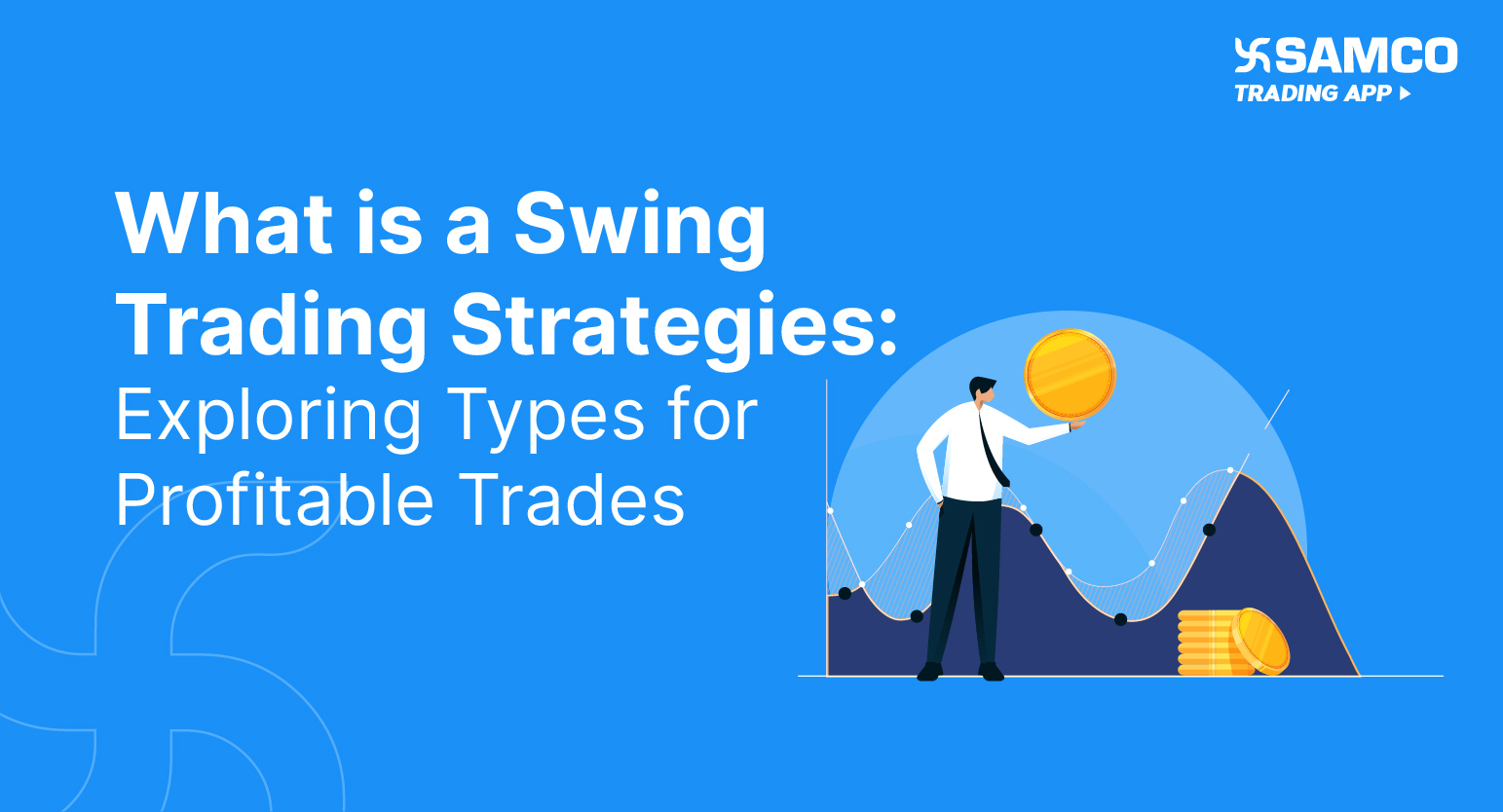In this article, we will look at Swing Trading in detail
- What is a Swing Trading Strategy?
- Difference between Swing Trading and Intraday Trading
- What are the types of Swing Trading Strategies?
- Pros and of Swing Trading
- Cons of Swing Trading
- Conclusion
What is Swing Trading?
Swing trading is when a trader buys shares and holds them for a short time. The time period to hold shares is more than one day and could be a few weeks or months. The idea is to capture the ‘swings’ in the market and profit from it. Swing traders buy when the price falls and sell when the price rises. They find short-term opportunities in the market using technical analysis. In swing trading, it is very important to keep stop-loss and exit when it is triggered. Swing traders usually aim to make smaller profits over a short period of time which when accumulated over a longer period becomes a substantial amount. Similarly, the losses are also small.Swing Trading VS Intraday Trading
Intraday trading refers to buying or selling stocks on the same day. Traders may buy multiple stocks and sell multiple stocks on the same day. Stocks are not held overnight. On the other hand, swing trading involves holding the stocks for a few days or weeks. The reason Intraday traders cannot hold stocks or positions overnight is that in day trading, the leverage is usually four times the investment. However, the leverage is just two times the investment in swing trading. A day trader has to make quick decisions regarding buying and selling stocks whereas a swing trader has the option to hold on to the stock for several days or weeks. A swing trader uses various technical analysis tools to identify trends, patterns, and direction in stock prices.Types of Swing Trading Strategies
There are many swing trading strategies. Some of the most commonly used strategies are as follows:- Fibonacci Retracement: This method allows investors to identify a specific stock’s support and resistance levels. These are horizontal lines indicating likely support and resistance for a stock. Each level is a percentage. Suppose the price of a stock rises Rs10 and then drops Rs 2. In that case, it has retraced 20%. The Fibonacci retracement levels are 23.6%, 38.2%, 61.8%, and 78.6%.
- Trend trading: In this strategy, the swing trader identifies and follows the current trend. Traders use this strategy to profit from the momentum of the trend. They enter trades in the direction of the trend. Traders use technical analysis tools such as moving averages or trend lines to identify the current trend of the asset. Traders enter the trader in the direction of the trend thinking the trend will continue. For ex: If the stock is trending upwards then the trader will enter into long positions on pullbacks and vice versa. Stock prices move within the support and resistance range. When the stock price crosses the support or the resistance level, it indicates a reversal. When stock prices move above the resistance level it is identified as an overbought situation and the area below the support line is where overselling occurs.
- Reversal Trading: While in trend trading traders enter the position in the direction of the trade in reversal trading the traders enter the trade in the opposite direction of the previous trade. Here the traders identify the potential trend reversals in the stock price and will enter in the direction of the reversal. For example: If a stock has been moving downwards but shows signs of reversals then the trader will enter into a long position and vice versa.
- Breakout strategy: Here swing traders look for potential breakouts in a stock price movement. For Example: If a stock is moving between the support and resistance range but shows signs of breaking above the resistance levels then the trader would look to enter into a long position.
- Simple Moving Averages (SMA): SMA is a technical indicator that helps to calculate the average price of the stock in a specific period of time as decided by the trader. The time period could be a few days to several months. If the current price of the stock is above the SMA. It indicates an uptrend in price and therefore the traders would enter into a long position
Pros of Swing Trading
- Short-term duration: The duration of a swing trade is just a few days or weeks. They can earn reasonable returns in a few days or weeks and need not spend the whole day watching their trades like a day trader.
- Less risk: Swing traders have comparatively less risk because they can adjust their positions more quickly than others.
- Less speculation: Swing traders mostly use technical analysis and charts to determine the entry, and exit points thereby lowering the risk of speculation.
- Flexibility: Swing traders are not obligated to sell their shares after a specific time. Traders need not sell at a loss.
Cons of Swing Trading
- May miss out on long-term gains: Swing traders exit their position once they have made their money in the trade. However, this often results in them missing out on long-term trends.
- Sudden reversal in market movement: Sudden market movement in the opposite direction may result in losses.
- High costs: More trades in a shorter time frame means more money spent on transactional costs. This may substantially reduce the overall returns.
- High profit and high losses: Swing traders are exposed to greater risks than long-term investors or day traders due to unexpected news events resulting in a change in market sentiments.




 Easy & quick
Easy & quick
Leave A Comment?